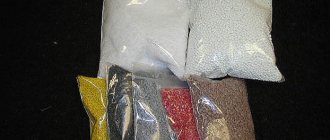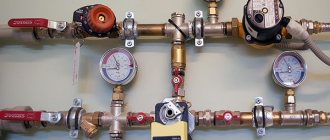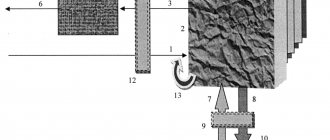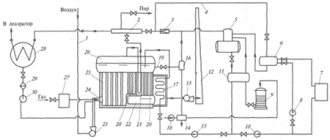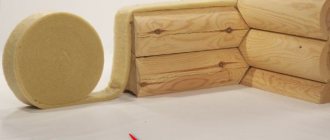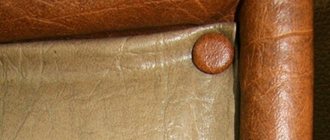What it is?
Most construction and installation works require solving the issue of sealing joints and connections of various types of constituent elements. In particular, this task is relevant during the installation of a water supply system for a central heating system, as well as gas distribution communications. Installation of structures where a certain level of pressure is expected to occur inside requires the use of such material. Previously, it was preferred to use flax fibers for sealing. Today, thanks to the expansion of the product range, fluoroplastic fum tape acts as a sealing and sealing material.
In plumbing systems, you can often encounter the problem of leakage. Such problems occur due to the loose fit of the structural parts to each other, since they may have slightly different sizes and diameters. Such a tolerance ensures free screwing in and, if necessary, removal of any individual part of the system in the event of a breakdown, but does not allow the elements to be fixed together as tightly as possible.
In order to protect the pipeline from water leakage and seal joints, you can use fum tape. The products are freely available and have a low cost, so purchasing such a useful product will not cause any difficulties.

The product also has a second name - most people quite often use it for household purposes, calling it silicone tape. The material is a sealant made in the form of a narrow, non-sintered film. The raw material for the production of the product is fluoroplastic. Based on this, the abbreviation “FUM” stands for the following: fluoroplastic sealing material. During production, the fluoroplastic rope is rolled into a film to the required thickness. It can have different sizes, and the tape is sold already wound on a reel.
Fum tape can also be called a deformable filler and thread lubricant , due to which the resulting connections are characterized by a high level of tightness. The product contains fluorine, which increases the heat resistance and strength of the tape. The product does not tear, does not stretch and is resistant to contact with chemicals. In addition, the product retains the above qualities for quite a long time. The main positive feature of the product is its performance and a wide range of conditions in which it can effectively cope with its task.
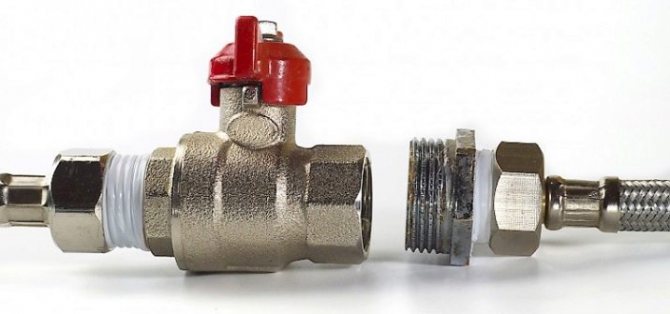
The products belong to the group of low-flammable goods and non-explosive materials. But when the tape is heated to a temperature exceeding +260ºС, fluoroplastic, the main component, begins to actively evaporate volatile fluoride compounds, which have a high level of toxicity and are therefore unsafe for human health. To understand the markings applied by the manufacturer to their products, you should know that fum tapes are marked as follows: the product indicates its brand, the length of the material roll, as well as the width and thickness of the film. In order to have the most complete understanding of the product in question, it is necessary to study the positive and negative characteristics that are inherent in the product.
The advantages of fum tapes include the following features:
- the main characteristic of the material is its resistance to mechanical and thermal influences;
- the tape has high ductility during operation;
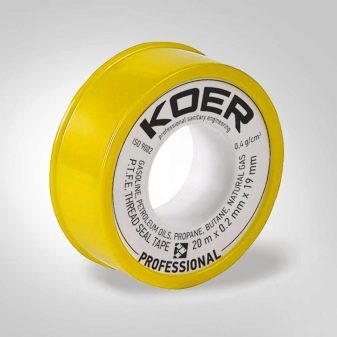
- on a working base, a high-quality tape retains its qualities for a long time - it does not become hard, does not crack, and does not move away from the places where it forms a connection between structural parts;
- the material does not react with chemicals and is resistant to their effects;
- if the tape is not heated to the maximum permissible temperature during operation, the material is absolutely non-toxic and therefore safe for humans;
- The operating temperature range of the product is from -70 to +200ºС. Ignition of the fum tape can occur when it is exposed to a temperature of about +520ºС;
- the operating pressure level can reach about 41.2 MPa;
- elongation at break in some cases is about 100%;
- The material is corrosion resistant.
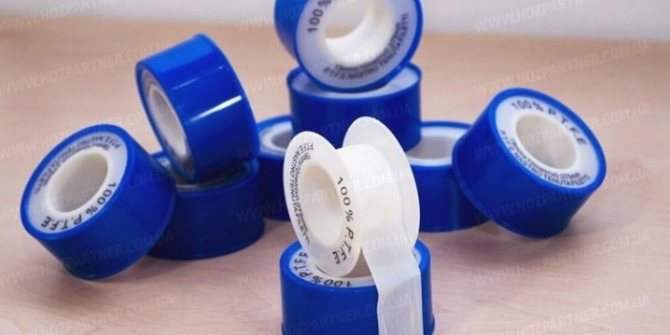
For an objective assessment, it is necessary to conduct a comprehensive study of the product, so it is worth noting the existing disadvantages of fluoroplastic sealing materials.
The disadvantages of the product include the following properties:
- a high level of tightness of connections is difficult to achieve when using tape for pipes with a large diameter;
- Often, due to temperature fluctuations, the material can expand, which negatively affects the tightness of the connection of structural elements;
- for highways, where the joints using fum tape will be subject to vibration and movement, the tightness of the formed joint of the parts will be compromised.
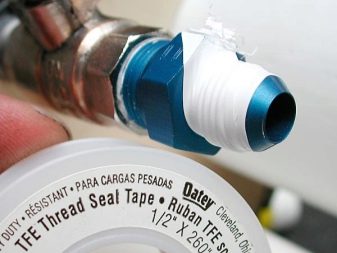
It is worth noting that when using a sealant to perform installation work at the household level inside residential premises, for example, when installing hot and cold water supply or heating systems, the disadvantages of the products are not critical, and the results of the work have high quality indicators, as well as aesthetic appeal of all formed compounds.
The warranty period for storing products is 13 years from the date of manufacture. Storage conditions for the product require a certain level of humidity, which should not exceed 80% in closed and dry rooms. In addition, fum tapes should not be stored in close proximity to heating sources; the minimum distance between the products and devices is at least one meter.
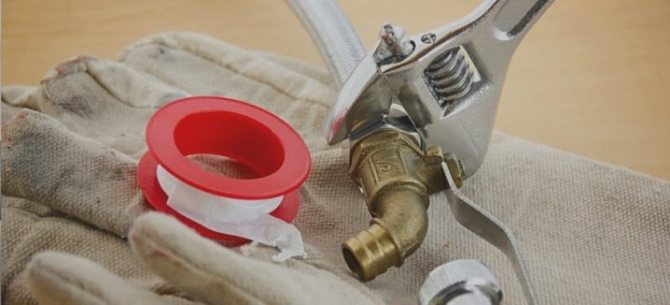
Manufacturers distinguish several types of products.
- FUM-1 - products of this group are recommended for use in water supply and gas networks, as well as in pipelines with aggressive chemical media, mainly of an industrial type. The tape can be used in structures where concentrated or dilute solutions of alkali and acids are present. The product contains lubricant - about 20% petroleum jelly. Such a product is most in demand, since the lubricant included in it provides protection to metal parts from oxidation, and also facilitates the friction of metal on metal during installation. However, there are some restrictions for the use of fum tape - this product is not suitable for working with threaded connections of oxygen equipment, since oxygen causes the oil to oxidize and release thermal energy.
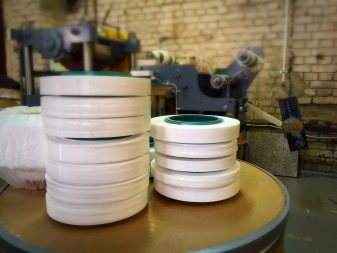
- FUM-2 - similar products are intended for use as a sealing material in systems where the movement of potent oxidizing agents and oxygen occurs. Lubricant is not included in the composition of the tapes of this group or is contained in a minimal amount.
- FUM-3 - this product is produced for work with water supply and gas communications, in addition, it is allowed for installation in systems in which aggressive media circulate. There is no lubricant in the product. This product is made from the edge parts of materials belonging to the first two product groups.
What is fum tape, its application
Despite the unfamiliar name, many of us know fum tape very well, and most people actively use it in everyday life, calling it silicone tape. Let's take a closer look at what it is, where and when fum tape is used, and how to use it correctly.
In fact, this product is made from fluoroplastic (PTFE-4), which has excellent sealing and heat-resistant characteristics. The tape is produced in the form of white or transparent strips wound into rolls. The width of the tape is 1-1.6 cm. Some types of tape may additionally have a lubricant or a layer of adhesive.
The scope of application of fum tape is quite diverse. With its help, they achieve sealing of almost any detachable connections: threaded, nipple, flanged. It is used in many engineering systems, the operating pressure of which does not exceed 9.8 MPa. In everyday life, it is used for the installation of metal, plastic and metal-plastic water supply systems, when connecting plumbing fixtures, and installing gas equipment. Fum tape also provides sealing of country irrigation systems.
Fum tape for plumbing has its own symbol, which reflects its brand, length per roll, width and thickness. For example, a designation such as: “FUM 12m x 12mm x 0.1mm” can be deciphered as follows: “Tape 12 m long, 12 mm wide, 0.1 mm thick.”
Fum tape is classified into the following main groups, depending on its purpose:
- Fum-1. Used for sealing gas and water supply networks, in systems with aggressive chemicals. Lubricant is used (up to 20% petroleum jelly).
- Fum-2. As a sealant for systems in which strong oxidizing agents and oxygen circulate. No lubricant is used.
- Fum-3. Used for water and gas systems, including systems with aggressive substances. No lubricant is used. Typically, this type of fum tape is used as the edge part of the tapes listed above.
Scope of application
The areas of use of fluoroplastic sealing material are as follows:
- the tape is in demand during the installation of plumbing fixtures and communications;
- the product can be used during the installation of measuring equipment and control valves;
- fum tape is used when working with steel pipes whose diameter does not exceed one inch;
- for sealing sections of copper pipeline where threaded fittings are used for connection;
- sealing material is used in pipeline systems consisting of polymer-type raw materials and metal-plastic;
- for connecting elements made of copper, brass and bronze using thin-walled fittings with fine threads.
How to use?
Before starting work with fum tape, it is necessary to carry out a number of mandatory preparatory measures with the working base.
This work includes the following stages:
- The surface on which the seal will be wound must be clean, so all existing dirt and rust must be cleaned and removed. To do this, you should use a metal brush;
- the working area is degreased. For these purposes, you can use gasoline or solvent, which will help prevent the seal from slipping on the parts;
- You can work with fum tape only after the working base has completely dried.
In addition, despite the fact that installation work with the product is quite simple, during its implementation it is necessary to follow a certain technology for winding the tape, otherwise it will not be possible to avoid depressurization of the connection made. The work should be carried out adhering to the following scheme in the strict sequence of the described steps.
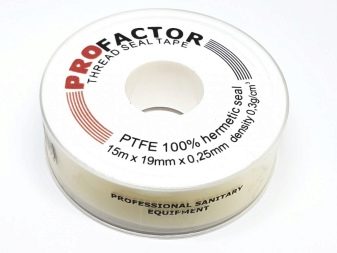
- After the preparatory activities, the seal is wound. The tape must be wound onto the thread strictly in the direction of clockwise movement, since the installation of the connecting pipe will take place in the same direction. Movements should be smooth, since working too vigorously with the tape can stretch the product and deform it. However, weak fixation can also have a negative impact, since the turns during such work will be loose.
- The number of layers of sealant directly depends on the diameter of the connection, as well as on the thickness of the fum tape. If the diameter of the pipe is larger and the seal purchased for sealing is thinner, the more turns of material will need to be made. For example, for a pipe with a diameter of 30 mm, you will need at least three layers of tape, and for a product with a cross-section of 40 mm, at least 4 turns. In addition, the thread depth depends on the diameter of the connection. It should be borne in mind that all voids present in the connection will need to be filled with material as tightly as possible.
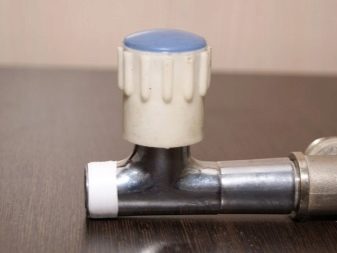
- After testing the system, a leak may be detected at the connection. In this case, the entire procedure will need to be performed again. To do this, it is necessary to disassemble the entire connection, removing the remaining sealant, and then, using a new tape, perform the work according to the same scheme, but increasing the number of turns made. You cannot wrap a new product on top of an old one, as this will not ensure tightness.
In order to organize the most comfortable conditions when working with fum tape, it is worth remembering its physical features, which primarily relate to the fact that the product is quite slippery and can be uncomfortable to work with.
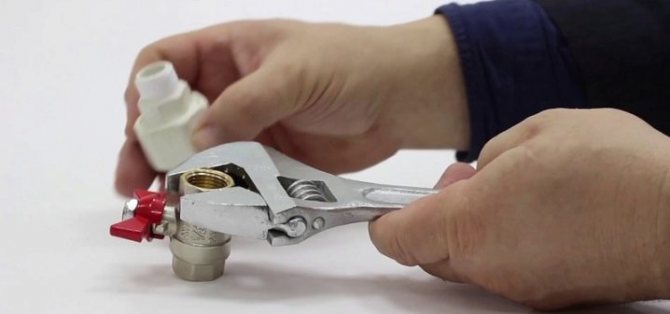
Adviсe
Before purchasing a product, you need to read the instructions for its use, the specific features of sealing using a material such as fluoroplastic, and also take into account your own requirements for the quality of the future connection, comparing them with the capabilities of the material. The first rule when choosing fum tape is to select a quality product. Reliable tightness of connections can only be ensured by a film that will stretch well during operation. Those products whose properties do not allow for stretching will very quickly turn into crumbs or crack. Cheaper products, during the production of which they tried to save money, soon after winding will lose their elasticity, and in the reel they will not stretch well or will begin to break into fibers.
To avoid mistakes when purchasing fluoroplastic seals, experts recommend following the recommendations of more experienced craftsmen.
For domestic needs when installing a pipeline in an apartment or private house, it is best to purchase the following types of products:
- work with large threads should be performed with tapes 19 mm wide, with a thickness of 0.12 mm to 0.2 mm;
- fine threads can be wrapped with a sealant 12 mm wide and a product thickness of up to 0.1 mm.
The cost of production depends not only on the manufacturer of the material, but also on the length of the coil. For minor repairs, you can purchase a small skein. At the end of the work, a certain amount of the sealant may remain on the reel; there is no need to worry about the product losing its properties, since it can be stored in this form for a long time, and if necessary, the material will already be at hand.
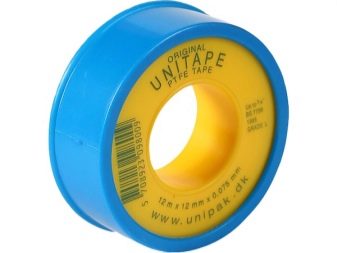
Previously, other than flax fibers, there was no alternative for sealing water pipe connections. Today the situation has changed, allowing the use of materials that have proven themselves in practice for such work. In addition, in comparison with plumbing flax, the use of fum tape is an easier process, since there is no need to treat the working surface with a layer of sealant, as required by sealing joints with flax fibers.
In this video, Alexander Kuznetsov talks about the advantages and disadvantages of sealing connections using fum tape.
Thread sealing with FUM tape
This video shows how to seal a thread with fum tape. To begin with, it must be said that sealing threads with fum tape is the most difficult for beginners. It is with fum tape that leaks most often occur in novice craftsmen, or in people who do plumbing at home. Let's figure out why.
It is impossible to say exactly how long to wind fum tapes. Everything is individual. Tapes come in different thicknesses and widths. You need to buy a couple of skeins and try to wind a few threads just at idle, in order to practice.
There are thin and thick tapes. One can be taken for large threads, the other for small ones, but they are also divided into widths. One tape can be 12 millimeters wide, and the second 19 millimeters wide. In addition to width, the tape has thickness: 0.1 mm, 0.75 mm, 0.12 mm and 0.2 mm - the thickest tape that is often used. That is, the tapes are different in thickness and width, and it is very difficult to say how much to wind the tapes onto the thread, because it depends on many factors. Therefore, it is only shown how to wind, how it should look. Based on the thickness and width of the existing tape, you can train and get the result that needs to be achieved, that is, the tightness of the connection. When choosing a fum tape, pay attention to how it stretches; if it doesn’t stretch and immediately breaks, then the tape is bad. It breaks in any case, but first it should stretch, and not immediately tear.
What causes leaks?
Due to errors in winding. If you wind the entire width, then the tape needs to be pulled so that it falls into each turn. Make sure that it engages, tighten it by hand until the end, then with a wrench.
For large threads (1''), you can use 0.2 mm tape and wrap it across the entire width. You can wind a thin tape (0.075, 0.12, or 0.1) onto the same thread, stretch it into a thread and place it in each turn, and end with the entire width so that the thread does not unravel.
If we are talking about winding fum tape on a thread, just on a thread, then it is advised not to use a thickness less than 0.1 mm. This is not convenient, you need a lot of it, and it costs a lot. Thin tape can be used, for example, on 1/4 inch threads. It is soft, thin, and shrinks easily. And when tightening, for example, a pressure gauge or pressure switch, the thread will not be damaged. Please note again: it was wound higher than the thread, that is, the entire thread was hidden, each turn was filled, wound a little on top and tightened. Otherwise, it will leak under high pressure.
In order to seal threads sometimes at home, in everyday life, it is still recommended to have a thread. It’s more convenient to work with thread - it’s harder to make a mistake. You can wind it randomly as you like, and the connection will not leak. You will have to practice with fum tape. But if you are engaged in plumbing services, then, of course, it is better to have tape with you.
Where to use fum tape?
Firstly, fum tape can be used on plastic fittings. It doesn’t matter whether we twist plastic with plastic, or metal thread with plastic, you can always wrap fum tape on the thread. Due to the fact that it is soft, that is... Yes, by the way, in the case of plastic threads, many wind the entire width. I pulled it, wound it, wound it a little more. That's it, let's tighten it up.
The following is where fum tape is used. If the spout needs to be repaired. It often happens on faucets that the spout leaks at the point where it connects to the faucet. There is a rubber gasket there, which, of course, is better to change and the problem will be resolved. But it often happens that there is simply no gasket, but at home there is fum tape 0.1 mm thick. You need to take it, stretch it into a thread, and wind something like this gasket. Then the entire width from above. They tore it off, pressed it, that’s it. Insert the spout into the mixer and the leaks are gone.
Further. If you need to change the faucet axle, or the gasket on the faucet has leaked, but there is no other one at hand to replace it.
Following. For example, there is an American cone. Despite the fact that the American one is considered self-sufficient and does not need to be sealed in any way, it is still better to wind the fum tapes once than to assemble them without it, start the riser, look, and find that the connection is leaking. Therefore, it is better to immediately take a 0.075 mm fum tape and wind 4-5 turns.
Again. Wind in the same way as flax. Clamp the first turn, overlap it, and then pull it into each turn. Put it in each turn and come back. A couple more turns in the middle, then the entire width on top 2-3 more times. Twist. Everything is wrapped up, all that remains is to clean it up.
So, where to use fum tape? On plastic threads, sometimes on thin and small metal threads. But mainly for repairing rubber O-rings and gaskets. If at the moment there is nowhere to buy this gasket, but it’s time to turn on the water. In all other cases, the fum tape is usually not wound. And that's why.
Adjustment without loss of tightness is impossible. This means that if you need to unscrew a twisted fitting a little, then, unlike thread or flax, this cannot be done without losing the tightness, and this is very important.
Secondly, many people simply don’t like to wind fum tape. The thread is much more convenient and easier to wind. In the opinion of many, it is generally the easiest to wind.
And third is the cost of the fum tape. Of course, it may immediately seem that fum tape is much cheaper than thread, but in fact, its consumption turns out that fum tape will need to be wound much more for the same diameter than thread. And as a result, the cost of one seal with fum tape or thread is approximately comparable.
Well, if you are looking for the easiest and simplest, but at the same time reliable way to seal threads, purchase modern anaerobic sealants directly from the manufacturer on our website.
Plumbing flax: application, advantages and disadvantages
Flax fibers have been used as a sealing material for over 50 years. It replaced hemp tow, the main disadvantage of which was the non-uniform structure of the thread, which significantly complicated the work. The requirements for sanitary flax are clearly stated in GOST 10330-76.
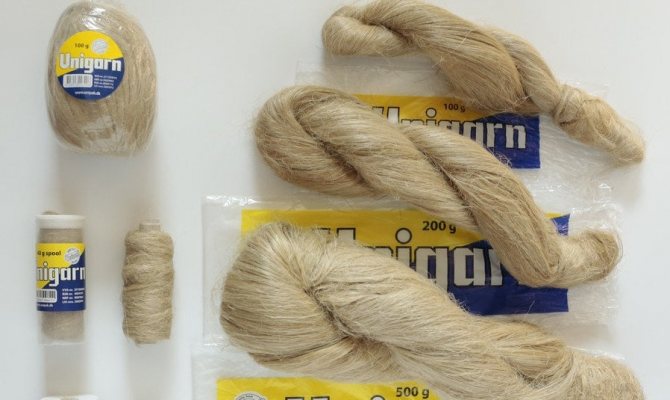
The flexibility and strength of flax threads ensures high-quality winding and contributes to the formation of a uniform seal that does not lose its functionality even at high (up to 160 0 C) temperatures. When heated, the material does not release toxins or other harmful substances.
The most significant advantages of flax include:
- Hygroscopicity
. In a humid environment, the material significantly increases in volume, which prevents even the slightest leakage due to the dense filling of the grooves of the threaded connection; - Versatility
. Experience in using flax fibers as a seal shows that, provided they are installed correctly, the material is suitable for working with any media, and the quality of sealing is practically independent of the diameter of the pipeline and the design features of the thread; - Manufacturability
. Winding can be done on an unprepared thread surface. No preliminary cleaning of dirt and corrosion is required, which greatly simplifies the work. In addition, natural fibers can provide high-quality sealing even to damaged threads; - Availability
. The cost of the material is low, and you can buy sanitary flax at any hardware store.
Thanks to the above properties, natural sealants based on flax fibers are widely used, however, some disadvantages of the material should be taken into account:
- The organic structure of flax intensively decomposes at high humidity, and a significant increase in temperature leads to drying out and loss of elasticity of the seal. The use of various impregnations, mastics and oil paints helps to avoid premature destruction, but at the same time the complexity of dismantling increases significantly.
- When winding, it is necessary to accurately determine the thickness of the seal, taking into account possible swelling. An excess can lead to internal stresses in the connection and a significant increase in the tightening torque, and an insufficient number of turns will not ensure tightness.
Currently, despite the presence of a large number of synthetic substitutes, plumbing flax is actively used for compaction:
- Connections with a thread diameter of more than 1 inch, as well as in the presence of erosion and mechanical damage on its surface;
- When installing permanent connections that require special reliability.
What is the best way to seal plumbing threads: thread, anaerobic sealant, flax or fum tape video
Based on the above, we can conclude that the use of natural flax fibers is not only economically beneficial, but also provides a reliable and tight connection.
Fum tape: application, advantages and disadvantages
The raw material for the manufacture of synthetic waterproofing tapes is fluoroplastic-4. The thickness of the strip ranges from 0.1 to 0.14 mm, and the width can be from 10 mm to 60 mm. Fum tapes are impervious to moisture. They can operate in the temperature range from -60 to +400 0 C.
Important!
The material can withstand temperatures of more than +400 0 C, however, it should be taken into account that already at +260 0 C synthetic polymers begin to release fluorine compounds that are dangerous to human health.
Fum tape has become widespread thanks to:
- Ease of installation;
- Elasticity and high tensile strength;
- Long service life;
- Possibility of quick dismantling;
- Possibility of use for sealing plastic and metal-plastic pipes, as well as thin-walled fittings.
In addition, when sealing with fum tape, no additional treatment of the winding with mastic or impregnation is required.
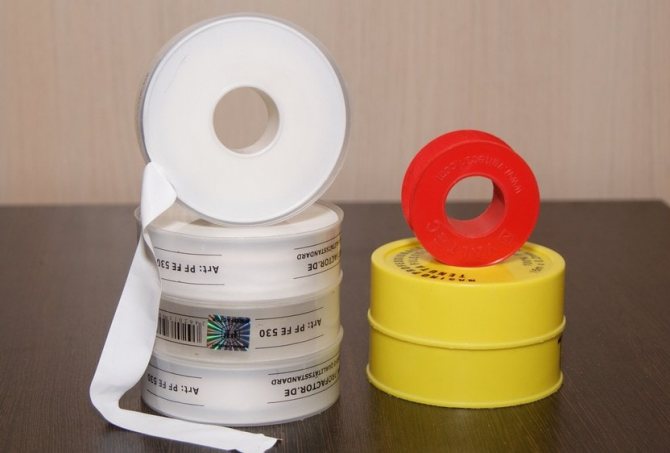
The disadvantages of fluoroplastic seals are as follows:
- The material is not advisable to use for diameters greater than 50 mm due to the insignificant thickness of the tape (0.1 - 0.14 mm);
- With amplitude temperature fluctuations, the tightness of the connection may be broken;
- Sharp edges easily cut through the fumig tape, disrupting the uniformity and solidity of the seal;
When using synthetic materials, even a slight rotation of the installed fittings can lead to loss of tightness. If the connection is disassembled, the thread must be thoroughly cleaned of tape residues and the winding must be repeated.
What is fum tape
FUM tape is a sealant, which is a narrow thin unsintered film made of fluoroplastic. The abbreviation “FUM” stands for: fluoroplastic sealing material.
All manufacturers of this sanitary film offer two types: white (thick) and translucent (thin). Both of these materials have a similar list of characteristics. Namely:
- are characterized by heat resistance;
- elastic;
- resistant to chemicals;
- average tensile strength 1.5 MPa;
- elongation at break not less than 200%;
- thickness 0.075-0.2 mm.
The film is made by rolling a fluoroplastic rope and wound onto polypropylene reels equipped with a lid. The width of the tape can be different: from 10 to 60 mm. To prevent the thin elastic film from sticking together during winding, one side of the tape is coated with lubricant. Most often this is medical Vaseline oil. There are also sealing films without lubricant.
Rules for winding sanitary flax and fum tape
To ensure the tightness of the connection, it is necessary to strictly follow the rules for laying the sealing elements.
How to wind plumbing flax
When winding organic fibers, special attention must be paid to the following points:
- Before starting packaging, flax strands should be impregnated with a special composition;
- Winding should be done clockwise for right-hand threads and counterclockwise for left-hand threads;
- Pre-combed fibers are placed into the thread grooves with slight tension;
- Layering of turns and kinks of fibers through the thread ridges should not be allowed. At the end of winding, the depressions should be tightly filled with flax.
- The packaged thread is treated with plumbing mastic, special impregnation or silicone, and then tightened until it stops.
How to wind flax (plumbing tow) onto a thread video
Compliance with these simple rules will allow you to obtain a reliable and tight connection.
How to wind fum tape onto a thread
Just like winding flax fibers, laying fluoroplastic tape has its own characteristics:
- The direction of the turns must correspond to the thread progress (for the right - clockwise);
- Fum tapes are wound with tension;
- For a high-quality seal, fluoroplastic tape is laid in at least two layers, with a thread diameter of 15 to 22 mm - three layers, from 25 to 40 mm - 4 layers;
- The tape should not be twisted or over-tensioned, as this can lead to uneven laying.
Sealing threads with fum tape video
Before you begin tightening, you should make sure that the winding is uniform and carefully smooth the end of the tape.
How to wind FUM tape correctly?
To make a threaded connection airtight, you do not need to have any special skills. However, this matter still has its own nuances that you definitely need to know about.
So, to begin with, the fum tape is wound onto the external thread clockwise, that is, in the direction of its twisting. While winding, you need to slightly stretch the tape so that the resulting winding is tight enough and does not dangle. The more the tape is stretched, the better the connection will be, but do not forget that if the tension is strong, the fum tape may break. In addition, the end of the tape must be brought out in such a way as not to interfere with the process of winding the connecting element.
Fum tape needs to be wound in several layers to ensure a good seal between the internal and external threads. The number of layers depends on the diameter of the pipe used. So, to connect pipes with a diameter of 15 to 25 mm, it is enough to wind the seal in four to five layers, for pipes from 25 to 40 mm in diameter - six to seven, and so on.
When working with fum tape, you should also take into account a number of its physical features. Firstly, it is quite slippery, so it can cause some inconvenience during installation. Secondly, after packing the tape and tightening the thread to the end, it can no longer be turned back without losing the tightness. Therefore, if it becomes necessary to loosen a connection assembled using fum tape, it can no longer be tightened back - such a connection will need to be disassembled and repacked again.
